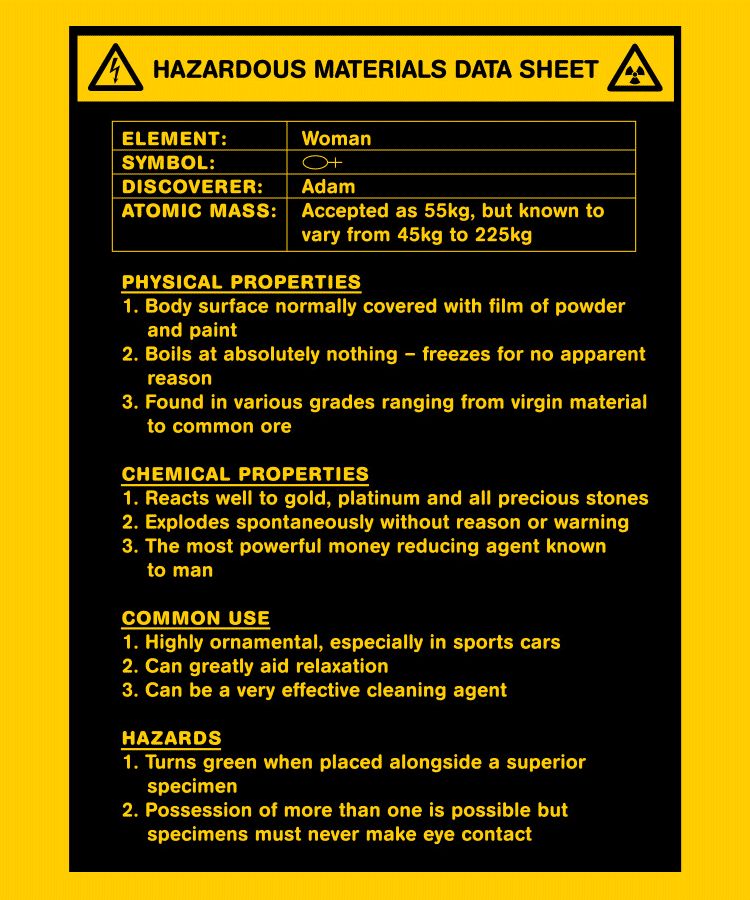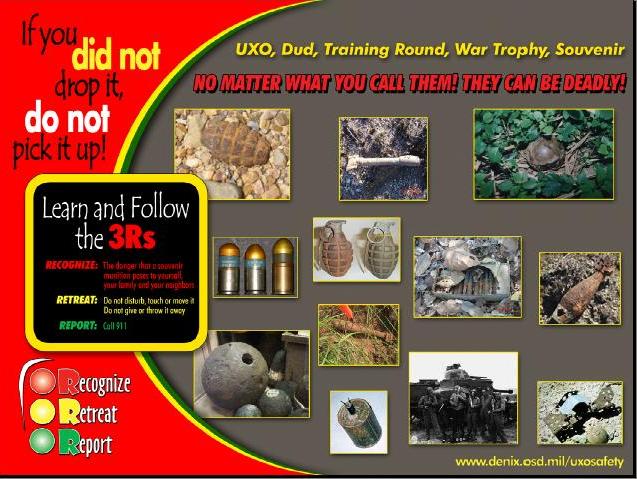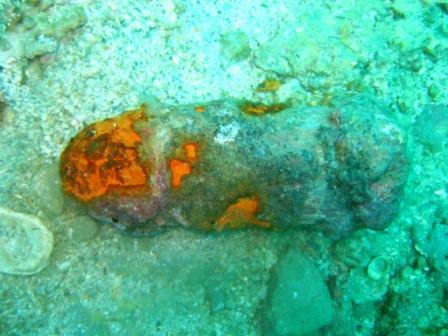DANGEROUS STUFF FOUND ON SHIPWRECKS AND REMOTE DIVE SITES
EXPLOSIVES
or…In amongst the shells, SHELLS
Written by Stephen Burton
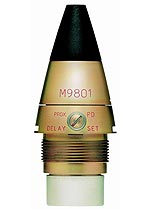
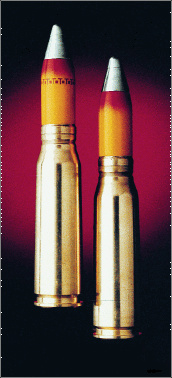
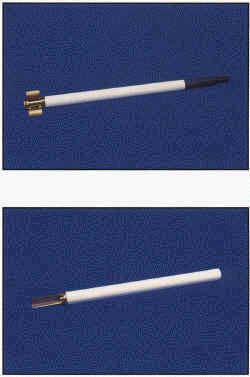
Download US Military Unexploded Ordinance (UXO) Safety Guide Poster. pdf 1.8Mb
Main US Military UXO Web Site – For Information, Poster, study documents
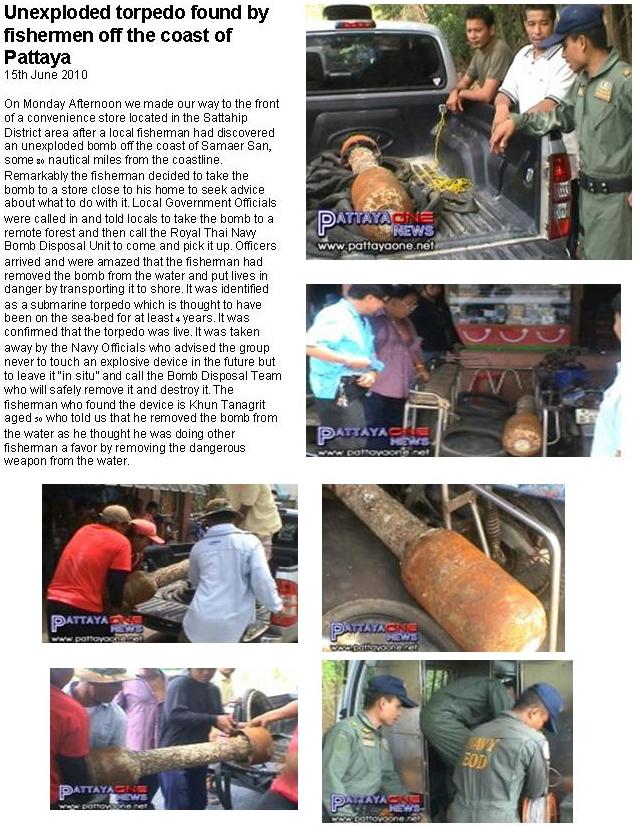
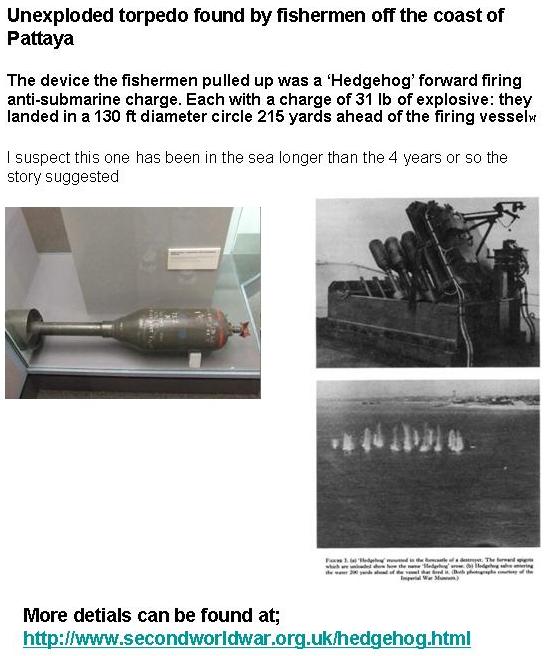
photos and article courtesy of http://www.pattayaone.net/pattaya-news/23346/unexploded-torpedo-found-by-fishermen-off-the-coast-of-pattaya/
+++
Several very serious accidents occurring recently prompted me to write this short article and release this subsequent report uxb found on local pattaya dive sites (1.25Mb) One accident resulted in a local diver being literally blown to bits, another resulted in very severe injuries requiring emergency repatriation for a young foreign tourist and a further incident blew a large offshore fishing vessel to pieces. The article is not specific to any dive site or indeed to any country, since most countries have been subject to war within the last 100 years and many have shipwrecks of warships and transport vessels carrying thousands of tons of unexploded ordinance in their territorial waters.. The focus of this first article is on the newer items that divers somehow deem’ collectable’
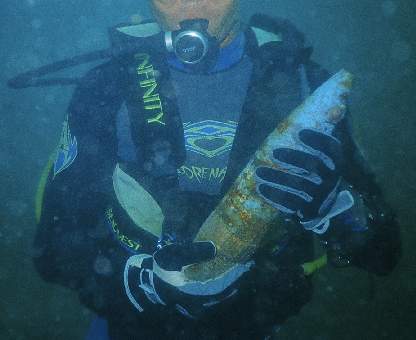
Question:- Durr… I wonder what pretty yellow markings on an olive green case mean…
(Answer= ‘high explosive’; Now put the bomb down gently on the sand ‘you twat’ and pray to God it doesn’t explode!!! )
Typical new explosives found on ‘test range’ dive sites
Many of the worlds popular dive sites consist of remote pinnacles located far out to sea away from the nearest land. It may come as a surprise to find out that the same features that attract divers and sea-life to the remote location also represent the ideal properties for a gunnery test range. Fortunately, these ranges are clearly marked on Admiralty charts as ‘dangerous areas’. Wisely, local fishing boats keep clear of them (not wanting any explosives brought up in the drag nets). This leads to a proliferation of fish life, further increasing the sites popularity with divers.
The latest range of attack helicopters and fighter aircraft pack a fearsome arsenal of weapons purposely designed to destroy reinforced targets, start fires, or to kill and maim as many people as possible in the area they’re fired at. The destructive power of modern military weapons is truly breathtaking. These are not children’s fireworks. Even small parts of them found underwater in a corroded state or appearing to be partially disintegrated, can easily kill the idiot diver and nearby innocent buddies.
Generally, most off shore gunnery ranges consist of the surface portion of a submerged pinnacle of sea-mount. I’ve notice that the most popular size for a test range site is when it approximates that of a small Naval Warship.
During target practice and mock battles, helicopters, fighter aircraft, and warships shoot large numbers of live and practice rounds at the pinnacle. Those that hit the rock usually detonate their warhead and explode into hundreds of shrapnel fragments. However, large numbers of unguided ‘standoff’ weapons miss their target and hit the sea close to the pinnacle. Many that hit the sea fail to detonate, and fall to the sea bead as ‘armed and fired’ projectiles. The represents the most dangerous condition for an unexploded piece of military ordinance.
Here’s an example of an apparently innocent bullet. Fired in there thousands at test ranges by ground attack aircraft..
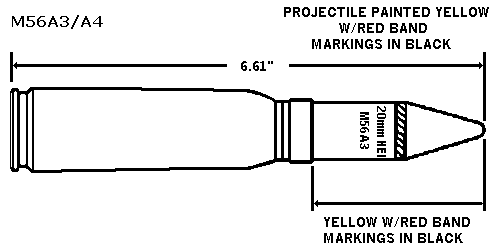
M56A3/A4 20mm HEI
DANGER – THIS IS AN EXPLODING BULLET – HEI= High Explosive Incendiary
Not the sort of thing you’d want clanking together in you BCD pocket or falling off the kitchen table at home onto a tiled floor.

M242 High-Explosive Incendiary-Tracer HEI Cartridge
From experience, It appears that collision with the sea does not seam to be enough ‘shock’ to detonate most explosive shells, missiles and large caliber bullets. However, impact with the sea often causes partial disintegration of the shells into component parts. All parts of the live projectile or missile head are potentially lethal.
Here’s the actual explosive bullet head found on the sea bed. The white bit in the picture above is the shell casing and is usually jettisoned out of the aircraft at the firing location. Dozens more armed but unexploded HEI bullets were located nearby. This nearly blew the foot off a diver when one actually rolled off the kitchen table onto a nice hard tiled floor. Unclassified documents rate this explosive 20mm shell as having a 2 meter lethal blast radius to personnel. The young guy was very lucky to only loose half his foot.
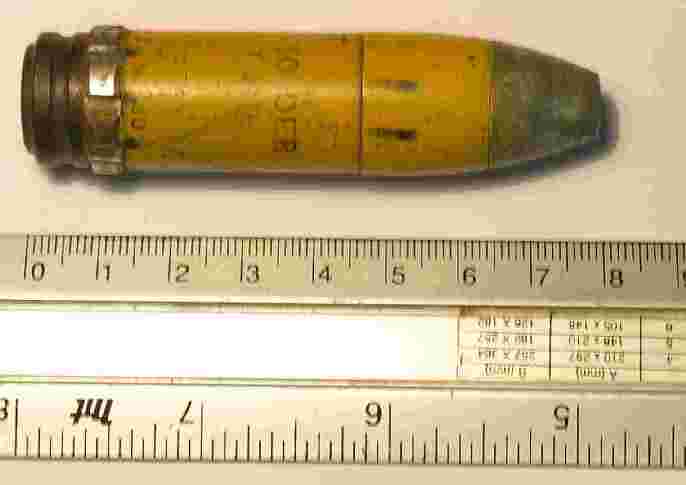
or also seen in the same divers lucky bag…
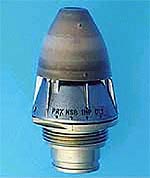
A detonator off a high explosive shell. Also containing high explosive and percussively sensitive (designed to explode when something hits it on the end) This is a really nasty piece of work.
Here is an example of what tissue damage the explosion of the pretty yellow bullet pictured above could do if it detonates next to your foot
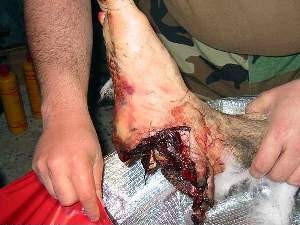
Other larger stuff
The Vietnam war favorite 2.75inch Hydra-rocket system. Still used today. fired by helicopter gun ships as a ‘stand-off weapon’ from a few km away to ‘soften up’ the target before the troops go in and mop up the remains.
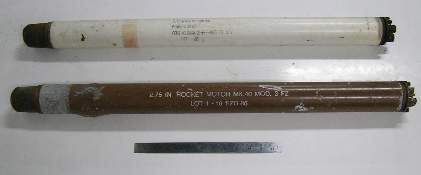
The 2 units above are practice rounds, and are approx 1 meter long.
Unfortunately, also lying nearby were High explosive live rounds live rounds of these types
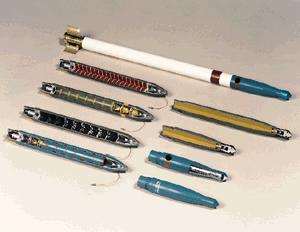
You can’t imagine how destructive this stuff can be. High explosive sub munitions, Antipersonnel mines, anti-armor heads, exploding heads with 1500 hardened nails flying in every direction.
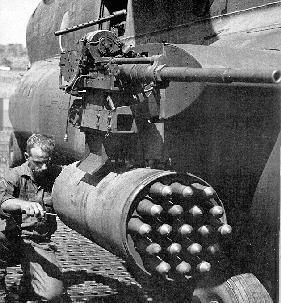
and here the Hydra 2.75inch, 19 rocket launcher on a Chinook helicopter gunship
Older WWII stuff
Any enemy shipping that came within a B24 Liberator bomber run of India (and that covers a very large area) came in for some very heavy pounding. A couple of large 500Kg /1,000pounder bombs found at a local dive site are shown below in pristine form. The body of the bomb is approx 1.5meter /6 foot long, nose and tail fused. I suggest that the barnacles covering the attractive brass nose and tail fuses should not be removed with a hammer and chisel. It’s only a suggestion though 🙂
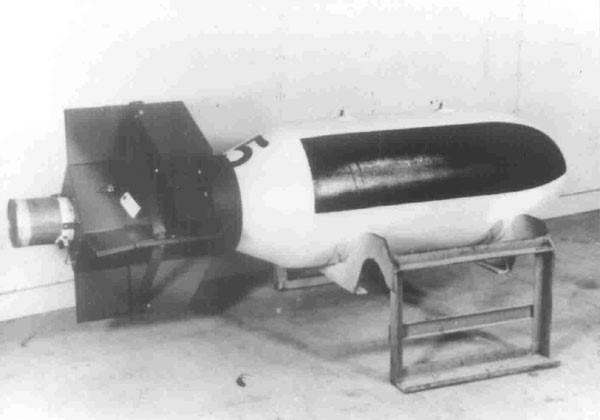
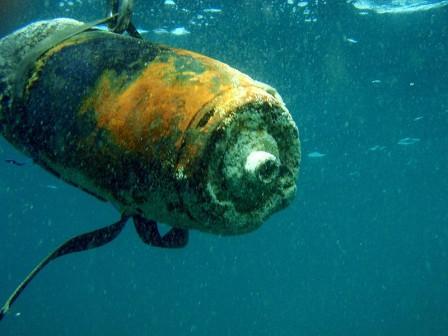
Examples of UXB’s in-situ on dive sites
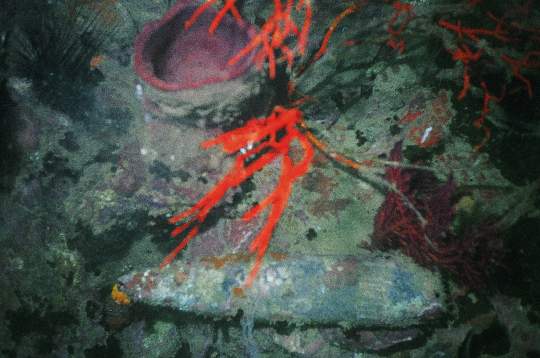
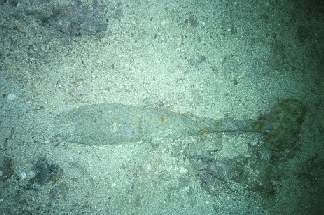
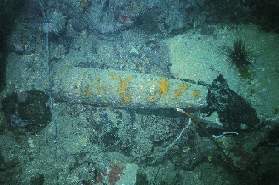
DON’T TOUCH, MOVE OR DROP STUFF ON ANY OF THE ITEMS FEATURED ON THIS PAGE. THEY CAN AND WILL KILL YOU EASILY. LEAVE IT TO THE PROFESSIONALS SUCH AS THE MILITARY OR PRIVATE CONTRACTORS LISTED BELOW.
aDeDe
Antwerpsesteenweg 220 9040 Gent – Belgium
Tel : +32 (0)9 228.61.50
Fax : +32 (0)9 261.26.61
“Some decades ago, ammunition dumping, in the water, was a commonly accepted, cheap alternative to destruction.
But this results in a major ecological and safety problems. Ammunition is indeed better preserved underwater but after many years, the shells start to corrode and the explosives become unstable.
The consequences are incalculable if nothing is done. Recovery is not without danger and demands specialized personnel”
+++
More than ninety percent of world trade is transported by ship and this makes MUSC’s marine security services vitally important to our client companies. MUSC operate in a variety of fields including anti-maritime piracy, counter terrorism, explosive ordnance survey and removal, prevention of maritime crime such as theft or sabotage.
+++
YOU HAVE BEEN WARNED
Other dangerous stuff

A Fisherman’s Shark Attack Report, Thailand
+++++
US Navy Diver Girl – ‘Could easily explode easily if carelessly dropped, or placed next to a superior specimen”
